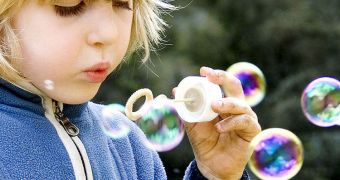According to the conclusions of a new scientific study, it would appear that children who go out and play with their peers are far less likely to become short-sighted than peers who spend most of their time indoors. The investigation was led by experts at the University of Bristol, in the United Kingdom.
The data the team used in this research were collected from the Children of the 90s study. Official statistics indicate that shortsightedness, also commonly known as myopia, can affect as many as 25 to 50 percent of children in the developed world.
Here and in the poorest country, myopia can have an incidence of up to 80 percent in the young population. The situation in southeastern parts of Asia is by far the worst, experts add.
Worldwide, around 33 percent of all adults should wear prescription glasses, in order to see objects in the distance. The number of people in this situation has increased by 50 percent over the last three decades.
Some time ago, a research by Australian and American investigators determined that kids who spent most of their time performing outdoor activities were less likely to develop myopia later on. However, the reason this correlation functioned remained a mystery.
What the UB team did was attempt to figure out whether the reduced chance is owed to physical activity, or to just being outside in the open. Investigator Dr. Cathy Williams and colleague Jez Guggenheim, from the University of Cardiff, led the research.
The team learned that kids between the ages of 8 and 9 who spent a lot of time outdoors were 50 percent less likely to develop myopia by the age of 15 than peers who spent most of their time in front of the TV or the PC, or doing chores and homework.
“We’re still not sure why being outdoors is good for children’s eyes, but given the other health benefits that we know about we would encourage children to spend plenty of time outside, although of course parents will still need to follow advice regarding UV exposure,” Williams says.
The expert is based at the UB School of Social and Community Medicine.
“There is now a need to carry out further studies investigating how much time outside is needed to protect against short-sightedness, what age the protective effect of spending time outside is most marked and how the protective effect actually works, so that we can try and reduce the number of children who become short-sighted,” she concludes.

 14 DAY TRIAL //
14 DAY TRIAL //